Right ascension 00 32 | Declination −30.0° | |
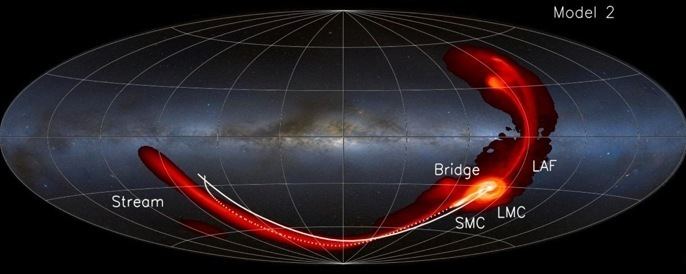 | ||
Object type Intergalactic high-velocity cloud Similar Small Magellanic Cloud, Large Magellanic Cloud, Sagittarius Dwarf Spheroid, Ursa Minor Dwarf, Leo I | ||
The Magellanic Stream is a stream of high-velocity clouds of gas extending from the Large and Small Magellanic Clouds over 100° through the Galactic south pole of the Milky Way. The stream was sighted in 1965 and its relation to the Magellanic Clouds was established in 1974.
Contents
- Half life 2 magellanic stream full walkthrough no commentary
- Discovery and early observations
- Models
- References

Half life 2 magellanic stream full walkthrough no commentary
Discovery and early observations
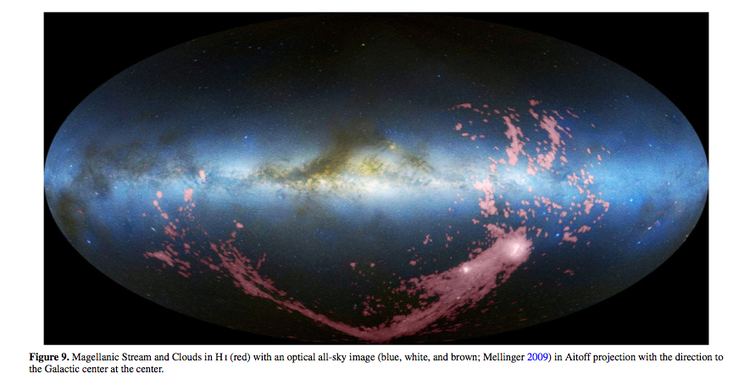
In 1965, anomalous velocity gas clouds were found in the region of the Magellanic Clouds. The gas stretches for at least 180 degrees across the sky. This corresponds to 180 kpc (600,000 ly) at an approximate distance of 55 kpc (180,000 ly). The gas is very collimated and polar with respect to the Milky Way. The velocity range is huge (from −400 to 400 km s−1 in reference to Local Standard of Rest) and velocity patterns do not follow the rest of the Milky Way. Hence, it was determined to be a classic high-velocity cloud.

However, the gas was not mapped, and the connection to the two Magellanic Clouds was not made. The Magellanic Stream as such was discovered as a Neutral Hydrogen (HI) gas feature near the Magellanic Clouds by Wannier & Wrixon in 1972. Its connection to the Magellanic Clouds was made by Mathewson et al. in 1974.
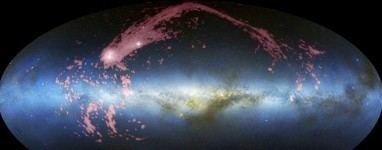
Owing to the closeness of the Magellanic Clouds and the ability to resolve individual stars and their parallaxes, and proper motion, subsequent observations gave the full 6-dimensional phase space information of both clouds (with very large relative errors for the transverse velocities). This enabled the calculation of the likely past orbit of the Large and the Small Magellanic Cloud in relation to the Milky Way. The calculation necessitated large assumptions, for example, on the shapes and masses of the 3 galaxies, and the nature of dynamical friction between the moving objects. Observations of individual stars revealed details of star formation history.
Models
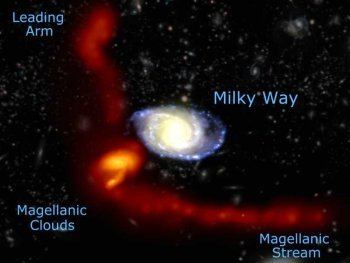
Models describing the formation of the Magellanic Stream had been produced since 1980. Following computing power, the initial models were very simple, non-self-gravitating, and with few particles. Most models predicted a feature leading the Magellanic Clouds. These early models were 'tidal' models. Just like tides on Earth are induced by the gravity of the 'leading' Moon, the models predicted two directions opposite each other, in which particles are preferentially pulled. However, the predicted features were not observed. This led to a few models that did not require a leading element but which had problems of their own. In 1998 a study analysing the full sky survey made by the HIPASS team at Parkes Observatory generated important new observational data. Putman et al. discovered that a mass of high-velocity clouds leading the Magellanic Clouds was actually fully connected to the Magellanic Clouds. So, the Leading Arm Feature had its existence finally established. Furthermore, Lu et al. (1998) and Gibson et al. (2000) established the chemical similarity between the streams and Magellanic Clouds.
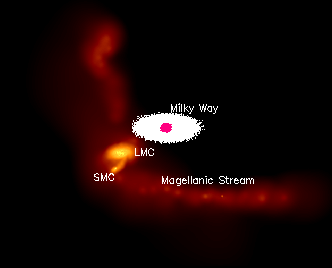
Newer, increasingly sophisticated models all tested the Leading Arm Feature hypothesis. These models make heavy use of gravity effects through tidal fields. Some models also rely on ram pressure stripping as a shaping mechanism. Most recent models increasingly include drag from the halo of the Milky Way as well as gas dynamics, star formation and chemical evolution. It is thought that the tidal forces mostly affect the Small Magellanic Cloud, since it has lower mass, and is less gravitationally bound. In contrast, ram pressure stripping mostly affects the Large Magellanic Cloud, because it has a larger reservoir of gas.
